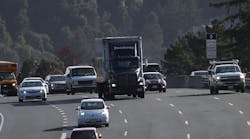For a Company that has a couple of DC’s and a number of Branches. How does one determine what products to stock at the Branch level? Example; a product was sold three times to three different customers in an 18 week period should you stock this product at that Branch? If so what would be the stocking quantity. Normally I would stock the product at the Branch using the Second highest sale quantity out of the three sales.
EXPERT ANSWERS:Consultant and Principal
Giuntini & Company, Inc.
The process of what, how much and where to position inventory is a complex issue for a distributor to efficiently and effectively address for made-to-stock items. All inventory levels are segmented into two groups: 1-tactical stock (levels are driven by a forecast typically based upon historical demand, replenishment lead times and stock-out risk mitigation) and 2-strategic stock (levels are driven by marketing/sales to expand product lines and/or customers; typically there had been no demand to tactically stock these products).
What I would recommend is that whatever inventory planning technique you embrace, and there are many, you ALWAYS develop a pro forma balance sheet of the recommended inventory planning levels and you segment those by tactical stock, subdivide by cycle and stock-out risk mitigation, as well as by strategic stock.
I have been in the field of SCM going on 40 years and the above recommendation of toggling between an operational plan and the resulting impact upon a financial statement will ALWAYS provide you and your management team with an "adult" solution to your inventory planning approach.
Founder
Collaborative Energizer LLC
To the best of my knowledge, companies block inventory in to movement buckets. So "C" items, slow movers are easy to follow. I would suggest that Sales, Marketing and the "Customer" understand "C" items and consequently that lead time can vary. I'd suggest that all "C" item be carried at the DC in the appropriate service area. A related suggestion is that each company delete as many C items from their offering and establish a policy that for every new product, a C item has to be deleted.
Finally, Omni Channel Marketing will turn the retail industry on its ear. The inventory inaccuracy that everyone fights today, has to be dramatically improved. Sales over Black Friday were trumped by orders placed by mobile devices for several options for delivery. The consumer is rapidly adopting electronic ordering, anxious to avoid the hordes at the retail store, the cost in terms of time et al, during this time of the year where time is critically important to the consumer.
Industry has learned to accept inaccurate inventory, using exponential smoothing and algorithms to arrive at numbers that are used in every aspect of supply chain management. The new world of retail cannot accommodate retailer inventory that is inaccurate after a physical inventory and then continues with degradation of 2-3 % each month until the next physical. I am a proponent of item level RFID and GS1 Standards, with sufficient experience to know that this approach will take companies to the promised land.
(I don't sell item level RFID, I don't consult, etc. in other words I don't have any skin in the game so I am totally objective).
There are important benefits in terms of inventory write offs, mark downs, inventory carrying costs, time consumed in reconciliation and the dramatic improvement in the balance sheet. Most importantly, when a retailer advises a consumer that a product is available, it HAS TO BE AVAILABLE. I believe that the new retail world will have a different profile, with the bottom tier of retailers going out of business.
Supply Chain Management Ph.D. Program
Penn State University
"This is a classic inventory question and the solution is not trivial. There are consulting and software firms that are devoted to answering this and related inventory questions (and I used to work for one of them).
As Ron and Joe indicated, there are many variables that need to be considered when deciding whether to stock and how much to stock at a branch or at a DC.
First, one needs to consider what happens when a customer places an order or comes into a branch looking for that product. If it’s not there, do they leave and buy it somewhere else? Do they buy what you have, and if that is not the full order, backorder it? Get it somewhere else? Backorder and get it when it arrives from the DC? Based on the question, I’m assuming the customer would leave the branch and purchase the product at a competitor. If that is the case, one needs to determine the cost of a stockout. Perhaps this is the profit missed from the lost sale. If the item is highly profitable, then you will tend to hold more in inventory than if it is less profitable.
Next, what is the cost to hold an item of inventory at the branch? What is the cost to hold it in inventory at the DC? How frequently is product replenished at the branch from the DC? Does the product’s value decrease over time (e.g. perishable)? How long are lead times from suppliers to the DC? What is the ordering cost from the suppliers?
Using all of this information, one can then model whether to keep a product at a DC, at a branch, at both, and in what quantities.
But here are a few rules of thumb. If the product is highly profitable and the cost to store it at the branch is low, then you will want to keep as much inventory on-hand as you predict within a replenishment time period (e.g. say you get weekly replenishments from the DC, and you expect a maximum of 10 products demand in a week, then store 10 units at the branch). If the product has a low-to-moderate profit margin and storage space is limited, then stock at levels that constitute an “average” order size over a replenishment period. "
Tompkins International,
supply chain consultants
The optimum solution for each customer location is to stock each needed SKU in the facility for which the total cost is lowest and the customer response time is equal or less than the required response time. For the two-tier network described, if all SKUs are stocked in the DC which serves the region in which the customer is located, the option exists to serve the customer from either a distribution center or from a branch. Accordingly, the following types of costs must be included in the optimization modeling:
Capital:
- New distribution center and branch facility or equipment investments for accommodating the volume and inventory in question, if any
- Distribution center and branch inventory working capital
Variable operating expenses:
- DC and branch operating costs
- DC-to-branch and customer transportation costs
- Purchase or transfer transaction costs
- Storage, risk and opportunity inventory holding costs
The optimum solution is theoretically deterministic, at least insofar as the costs and service times are concerned. Response time includes all of the time-consuming activities between customer order receipt and delivery. The number of options increases exponentially with the number of facilities and SKUs, so network and inventory optimization software, for both optimization and sensitivity analyses, is often used as a first step in finding the optimum solution. Since the available applications cannot handle every variable, mature judgment and experience are a crucial second step.
With the rise in time-based competitiveness and new distribution techniques for some market channels, the question is more complex. Reducing response time to customers may increase volume and the possible incremental margin should be taken into account in determining the optimal solution.
In every case, the amount of inventory for each SKU in each location would be its safety stock driven by its gross-margin-optimized level of customer service, forecast error and replenishment lead time. Likewise, the cycle stock order quantities would be driven by the balance between its acquisition transaction costs and inventory holding costs.
Join the ConversationShare your insights and opinions on the questions and the Experts answer(s). You must be logged in to the website in order to post your comments.









